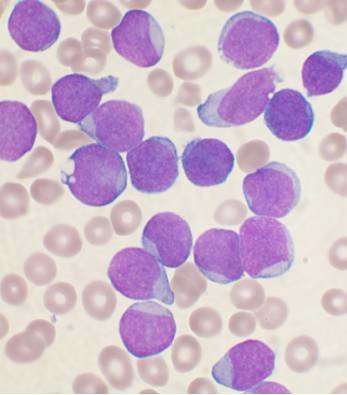This article has been reviewed according to Science X's editorial process and policies. Editors have highlighted the following attributes while ensuring the content's credibility:
fact-checked
peer-reviewed publication
trusted source
proofread
Extreme poverty a key driver for relapse in kids with ALL

Children with acute lymphoblastic leukemia (ALL) who live in extreme poverty and were undergoing maintenance therapy faced an almost two-fold greater risk of relapse compared with kids who weren't as poor, according to a study published in today's issue of Blood (April 18). Moreover, a higher proportion of these children had difficulty adhering to treatment, though researchers said this only partially explains the link between poverty and the risk of relapse.
"ALL is a curable disease, so while we observed relatively few relapses in total, children living in extreme poverty—those whose families were really stretched thin and not able to make ends meet—had a significantly higher risk of relapse, even after controlling for all other biologic and prognostic factors," said Aman Wadhwa, MD, MSPH, pediatric oncologist and health sciences researcher in the Division of Pediatric Hematology/ Oncology at the University of Alabama at Birmingham, and the study's lead author.
"These children were also much less likely to be able to maintain a critical level of adherence needed for sustained remission during maintenance therapy," he said. "These findings underscore an urgent need to identify patients with this level of financial hardship and connect them to resources, even if finite, to help."
For example, if transportation is an issue, providing gas cards or ride shares can make a difference. Providing plain language education about the importance of staying on maintenance therapy may also help.
ALL, which affects the blood and bone marrow, is the most common childhood cancer. In fact, more than half of ALL cases (about 60%) occur in children, and five-year survival rates now approach 90% thanks to advances in treatment, though this isn't true for or equitable across all children, according to Dr. Wadhwa.
He added that this is the first study to look at the effect of individual level poverty using annual household income and its effect on relapse rates among children with ALL. Previous research has relied on community measures of poverty—for example, using zip codes within which there can be wide variations in socioeconomic status—or health insurance status.
This study, a secondary analysis of the Children's Oncology Group Study that examined adherence to oral 6-mercaptopurine during maintenance therapy for ALL, included 592 patients. Patients were enrolled between 2006 and 2012 and followed for a median of 7.9 years. Two-thirds of patients were male. The median age at diagnosis and enrollment was 5 and 6 years of age, respectively. The most commonly reported race/ethnicity was Hispanic (35%), followed by non-Hispanic white (32.4%), Black (18.2%), and Asian (14.4%). Overall, 34.8% of parents reported their education as high school or lower.
Researchers collected self-reported individual income information at the start of the study and used data from the U.S. Census Bureau to group patients as living above or below federal poverty threshold. Among those living in poverty, patients were characterized as living in extreme poverty if the federal poverty threshold was over 120% of the yearly household income.
More than 12% of children that participated in the study were living in extreme poverty. Children living in extreme poverty were more likely to report being Hispanic or Black and having more household members (six vs. four people on average). There were no differences in disease or treatment intensity by poverty status. Rates of relapse at three years after enrollment were nearly double among children living in extreme poverty compared to those above the poverty threshold, 14.3% vs. 7.6%. Compared to children not living in extreme poverty, those living in extreme poverty were significantly more likely to be nonadherent to prescribed treatment (57.1% vs. 40.9%).
Extreme poverty, like other social determinants of health, was on par with some clinical measures used to risk stratify patients, Dr. Wadhwa explained.
"When I see someone with a new diagnosis of ALL, we look at biological factors that a patient walks in with—to determine if they have standard or high-risk disease. Patients at high-risk are 2.5 times more likely to relapse, that's similar to the risk of relapse that we are finding with extreme poverty and other social determinants of health," he said.
The findings underscore the need for interventions that assess and develop tailored solutions to make sure patients have equitable access to care.
"If we are going to risk stratify patients and give different treatments based on certain biological factors, then why not design interventions and treat these social factors that are also increasing their risk of relapse," Dr. Wadhwa said. "There are only so many gains we may be able to make by continuing to intensify therapy. We can come up with the best treatment in the world, but if the patient doesn't get it, then of what use was it?"
To date, poverty and other barriers to optimal care aren't routinely assessed or considered as part of treatment planning, but this may be necessary in order to improve outcomes among certain populations.
This study is limited in its relatively small sample size and was conducted before measurable residual disease was a routine part of clinical care. Still, the findings lay the foundation for future research to examine other social determinants of health and their potential role in childhood cancers, as well as inform interventions to address these barriers.
More information: Aman Wadhwa et al, Blood (2023).


















